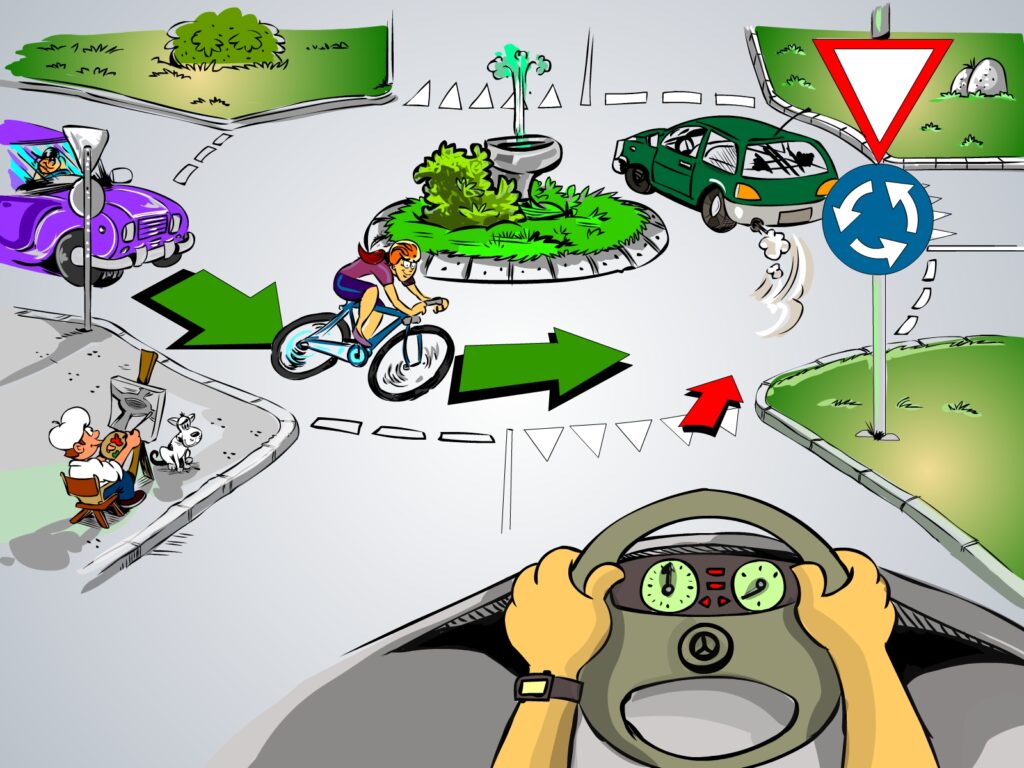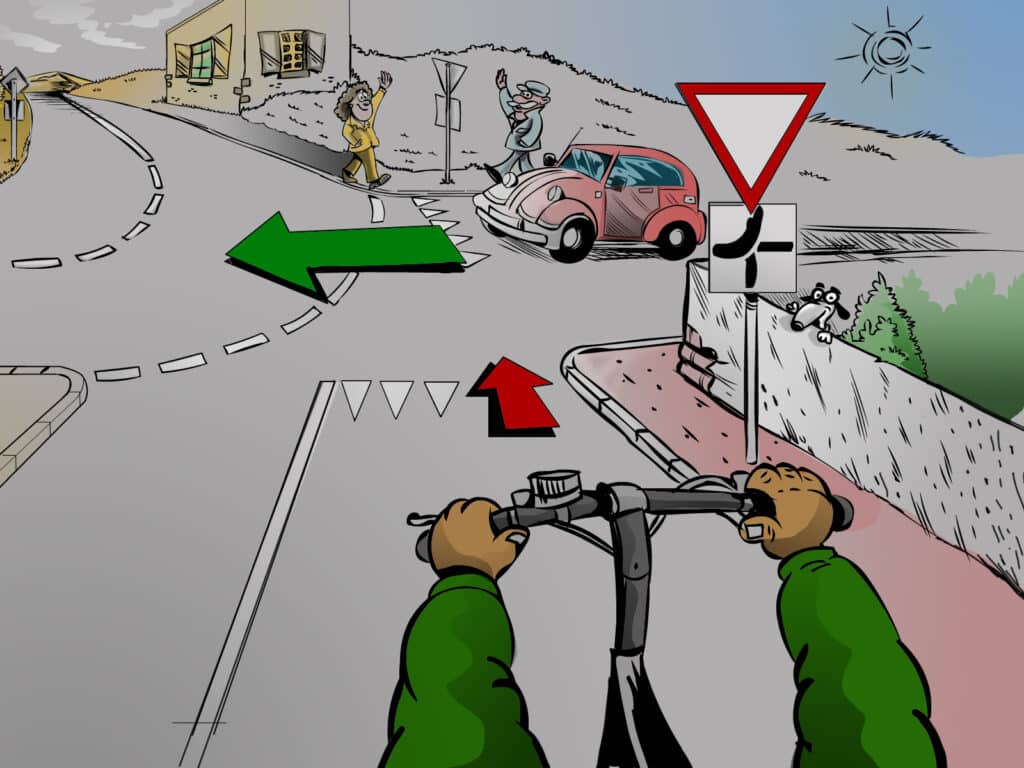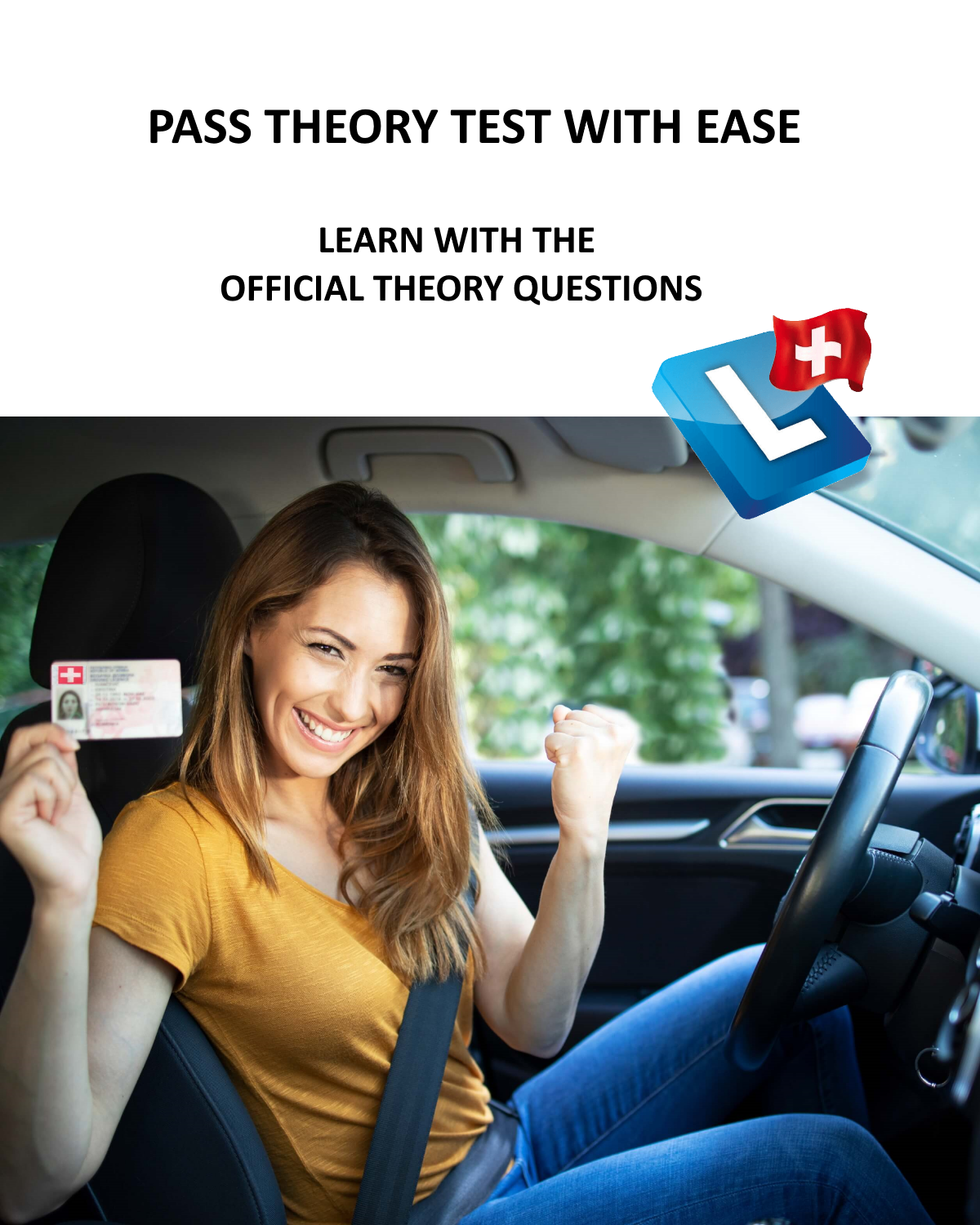Right of way
A person who is obliged to yield the right of way must not obstruct the right of way holder in his journey. He must moderate his speed in good time and, if he has to wait, stop before the beginning of the junction.
The “Stop” signal obliges the driver to stop and give way to the vehicles on the road he is approaching.
This signal must be observed at junctions with traffic lights only if the traffic is not controlled by traffic lights.
The additional sign “Direction of the main road” attached to the signals “Stop”, “No right of way” and “Main road” indicates the course of a main road changing direction. In conjunction with the “Stop” and “No Right of Way” signals, it announces to the driver on the road whose right of way has been suspended that he must give way to vehicles remaining on or leaving the main road. The wide line represents the main road.
The right of way applies under the secondary roads.
On main roads there are town signs with white writing on a blue background (“Start of town on main roads”). After this signal the vehicle is on a main road in the city.
On main roads there are town signs with white letters on a blue background (“Ortsende auf Hauptstrassen”). After this signal the vehicle is on a main road outside the city.
On minor roads there are town signs with black letters on a white background (“Start of town on minor roads”). After this signal the vehicle is on a minor road in the city.
On secondary roads there are town signs with black letters on a white background (“End of town on secondary roads”). After this signal the vehicle is on a minor road outside the city.
The streetcar must be given the right of way.
If the streetcar is on a minor road, it must give way to the vehicles on the main road.
Users of highways and highways have the right of way over vehicles on the access roads.
Outside of junctions, e.g. at entrances to properties, drivers of other vehicles must give way to cyclists when crossing cycle paths or cycle lanes If a cycle path runs at a distance of no more than 2 m along a carriageway for motor vehicle traffic, the same priority rules apply to cyclists at junctions as to drivers of vehicles on the adjacent carriageway. Drivers of motor vehicles on the adjacent carriageway must give way to cyclists when turning.
Outside junctions, e.g. at entrances to properties, drivers of other vehicles must give way to cyclists when crossing cycle paths or cycle lanes.

Before entering a traffic circle, the driver must reduce speed and give way to vehicles approaching from the left in the circle.
The “No Right of Way” signal obliges the driver to give way to vehicles on the road he is approaching.
This signal must be observed at junctions with traffic lights only if the traffic is not controlled by traffic lights.
The signal “Branching with right of way” announces on secondary roads a branching where the legal right of way applies.
This signal is only set up: if the driver cannot recognize the road joining from the right in time or if after several junctions, which are provided with the signal “junction with road without right of way”, a junction follows, where the legal right of way applies.
The person having the right of way must take into account the users of the road who have reached the forks before they can see him.
On road junctions, the vehicle coming from the right has the right of way. Vehicles on marked main roads have the right of way, even if they come from the left.
The regulation by signals or by the police remains reserved.
Before turning left, oncoming vehicles must be given the right of way.
The driver, who wants to insert his vehicle into the traffic, turn or reverse, must not hinder other road users; they have the right of way.
The right of way must be given to traffic in parallel columns even when the nearer column is at a standstill.
Drivers of motorless vehicles, cyclists, riders and drivers of horses and other large animals have the same right of way as drivers of motor vehicles.
In unregulated cases, for example, when vehicles arrive at a junction from all directions at the same time, the drivers must drive with particular caution and communicate with each other about the right of way.
If the main road changes direction and at the same time side roads enter, the driver leaving the main road and entering a side road must give way only to oncoming traffic on the main road.

If two or more roads with the signal “Stop” or “No right of way” merge at the same place into a road with right of way, the users of the merging roads have to give way among themselves.

Whoever enters a main or secondary road from factory, yard or garage exits, from field paths, bicycle paths, parking lots, gas stations and the like, or over a sidewalk, must give way to the users of these roads. If the location is unclear, the driver must stop; if necessary, he must call in an assistant to supervise the maneuver.
The signal “main road” indicates roads with right of way and shows the driver that the legal right of way is cancelled on the following junctions. On such roads, the special traffic rules for main roads apply.
The signal “End of main road” indicates that the right of way is cancelled and that the legal right of way applies again at junctions.
The signal “Branching with road without right of way” indicates to the driver on secondary roads that he has the right of way at the next branching.
The driver, who wants to insert his vehicle into the traffic, turn or reverse, must not hinder other road users; they have the right of way.



